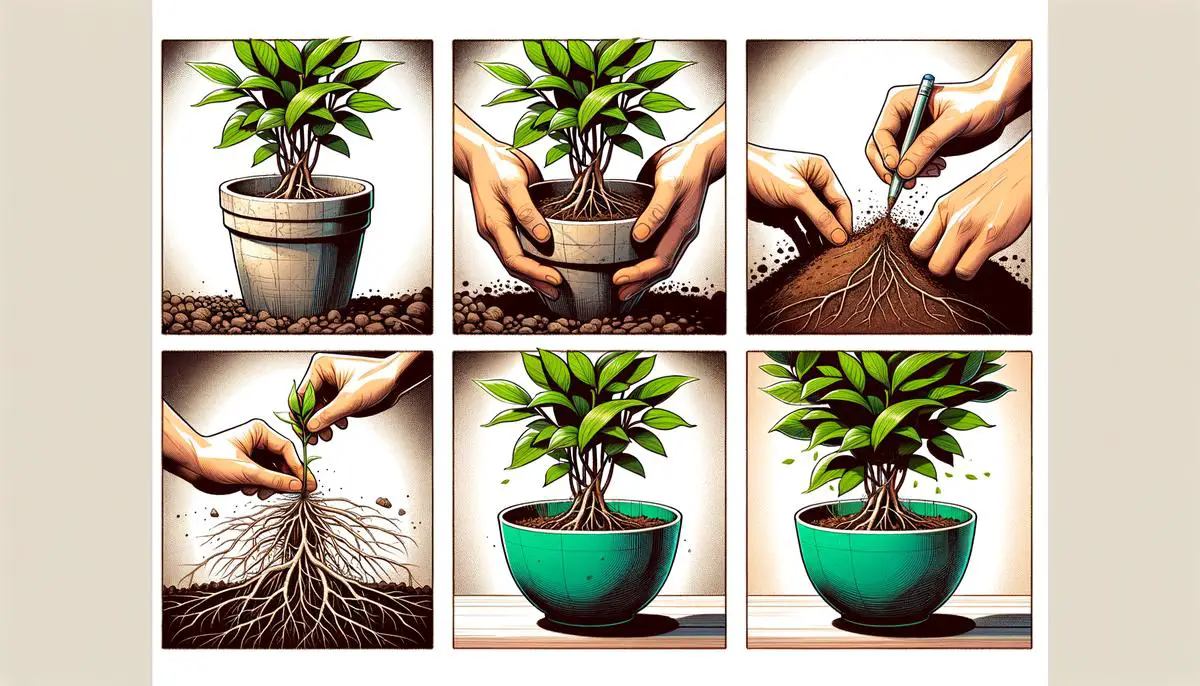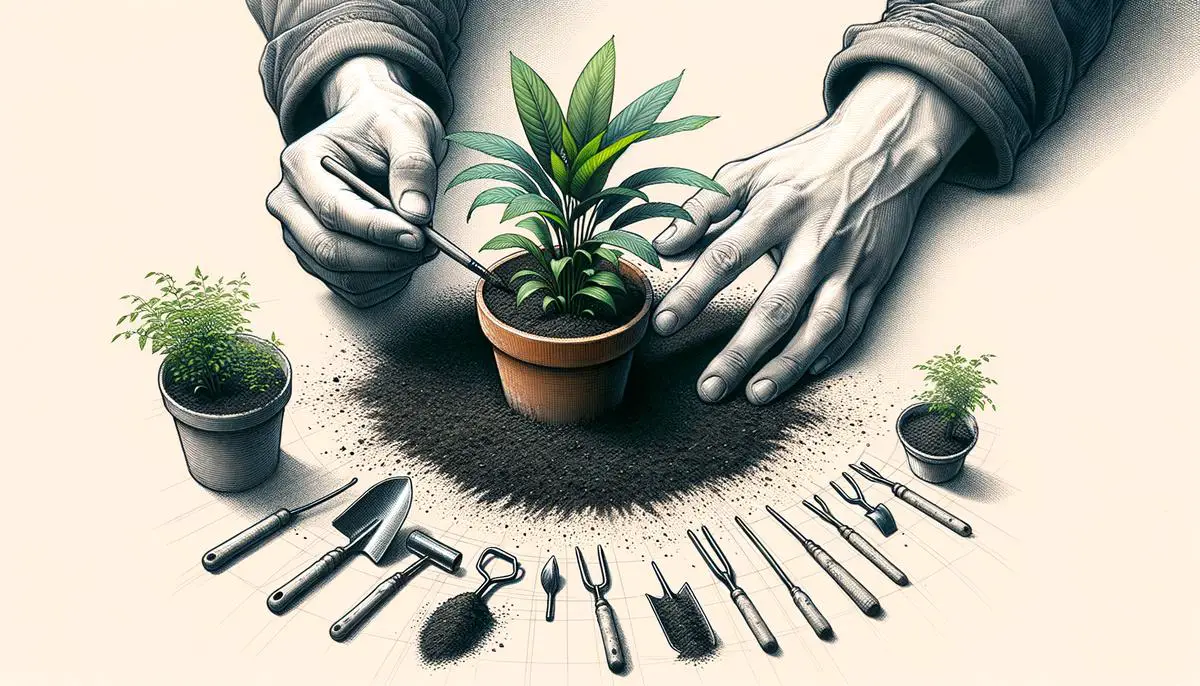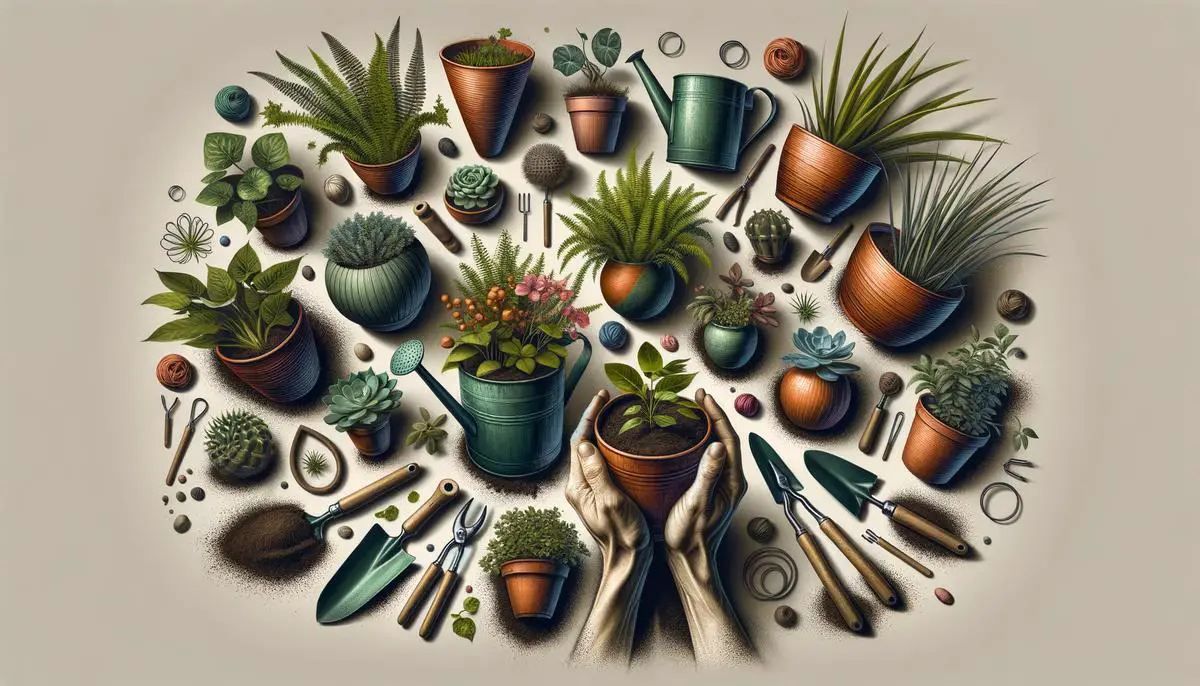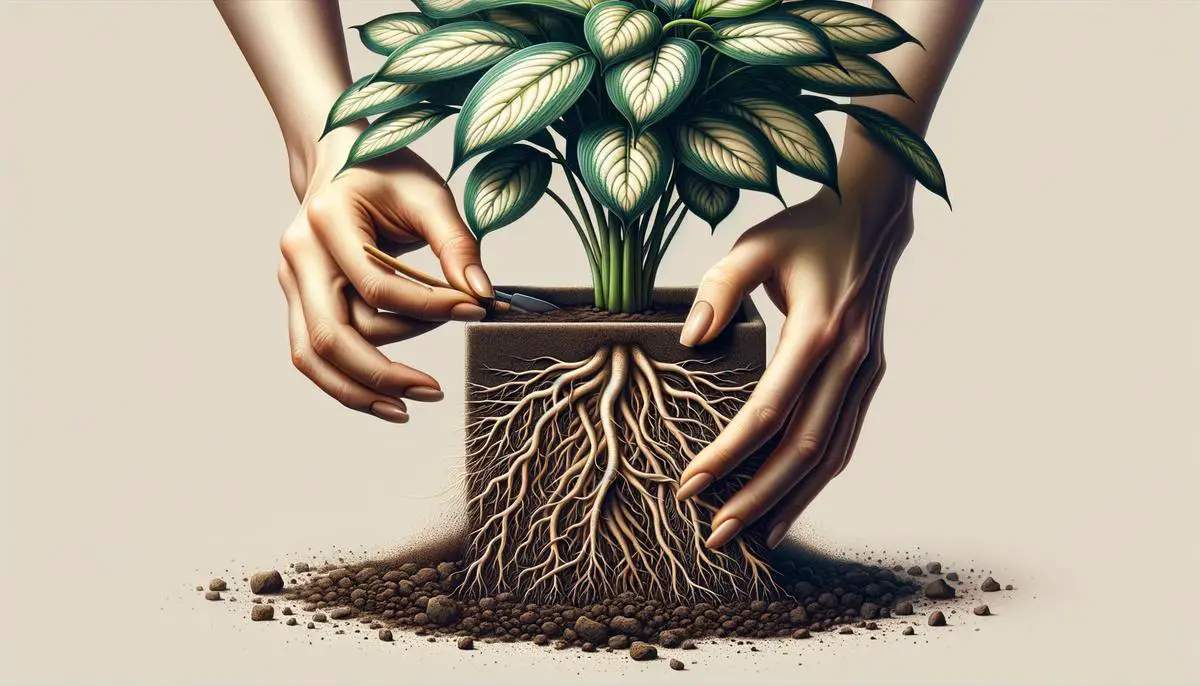Have you ever looked at your houseplant and wondered if it’s time for a change? You’re not alone. Many plant owners face this question, unsure of when or how to make the move. This article is here to guide you through recognizing the signs that your plant is ready for a new home and how to transition it smoothly. With straightforward advice and practical tips, we’ll help you ensure your green friend continues to thrive under your care.
Identifying When to Repot
When Your Houseplant Begs for a New Crib
Ever gazed at your leafy pal and wondered, "Are you trying to tell me something?" If your green amigo could chat, there might be times it's practically pleading for a new pad. Let's explore how to recognize when your plant is ready to level up – it's simpler than you imagine!
Roots on the Run: If it seems like your plant's attempting a covert escape through those drainage holes, that's clue number one. Like a crab outgrowing its shell, your plant craves more space to groove.
The Thirst Games: Observe when you water your plant, and the water zips through like it's on a waterslide, barely grazing the sides? That's your green buddy saying, "Hey, it's tight in here!" It's time for a switch when water doesn't linger because the roots are monopolizing all the room.
A Bit Squeezy: If you remove your plant from its pot and it appears the roots have been hosting a soirée, intertwining around each other due to limited space, consider that a hint. Your plant is performing the botanical equivalent of "I need more wiggle room!"
Droopy Demeanor: Is your plant losing its mojo? Sagging leaves and a depressed, wilted vibe can be SOS signals. No, it's not being overly dramatic; it just might be rootbound or deprived of nutrients.
Upgrade Time: Selecting a new residence for your plant companion is like choosing a new flat – not too spacious, just the ideal size upgrade. Imagine it as transitioning from a cozy studio to a roomy one-bedroom. A pot that's just an inch or two wider in diameter is spot-on.
Soil Matters: Just as we humans yearn for a snug bed, your plant fantasizes about comfy, nourishing soil. Snag some fresh potting mix that's suitable for its species – it's like giving your plant a nutrient boost.
Careful with the Change: When moving day arrives, be gentle. Delicately untangle those roots if they've gone all Rapunzel on you, and snip any party poopers (a.k.a., dead roots). Settle your plant into its new hangout with that fresh soil and give it a comforting pat-down to banish air pockets.
And there you have it – you've just given your leafy pal a cause to flaunt its stuff. Keep in mind, while they may not gossip or binge-watch Netflix with you, plants have their method of waving a tiny flag when they require something. Remember these indicators, and you'll be the top plant parent on the block. Your green pals will silently, but profoundly, appreciate you!

Choosing the Right Container and Soil
Selecting the Ideal Home for Your Plant Buddy
Plant Care Wizards, Assemble! It's time to master the art of enhancing your plant's digs. You've spotted the signs – roots sneaking through drainage holes, water disappearing acts, and seemingly ceaseless "I'm too big for this joint" vibes from your green compadre. You realize it's repotting time, but the journey to the ideal pot and invigorating soil mix might feel like an uncharted jungle path. Don't worry—it's easier than you think.
Enter the Plant Shop: Picking the Pot
Now that you're prepped for the grand repotting escapade, let's discuss selecting that swanky new abode. Envision this as your plant's dream home upgrade—a tad more spacious but not overly extravagant, sort of like moving from a snug studio to a comfy one-bedroom flat. Seek out a pot that's just 1-2 inches broader in diameter than the current casa. Why, you wonder? It's straightforward—root space! Excessive room can submerge those roots in soil and water, akin to an overzealous party host who won't stop topping up your glass.
Pot personality—it's a real thing. Plastic, clay, terra cotta, oh my! Each has its own ambiance. Clay and terra cotta pots breathe more freely, allowing water to depart the soil soirée graciously, so if you have a heavy hand with the watering can, these are your go-tos. Plastic pots retain moisture longer—ideal for the "Oops, I forgot to hydrate my plant" moments.
The Scoop on Soil Selection
Ready for an excursion to the soil section? Here's the scoop – not all soil is created equal. Snatch a bag of that top-notch, professional potting mix that's all about giving your plant precisely what it requires. Are you in the aisle perplexed, feeling like you're on a botanical rendition of a cooking show? No sweat. Consider your watering tendencies. If you're overenthusiastic with hydration, mix in some perlite or orchid bark to your potting mix playlist—it provides that extra crunch for drainage. Under-waterers, crank up the peat moss to store some moisture.
Mix & Match: Whipping Up the Perfect Soil
Got your components? Excellent! If the old soil in your plant's pot is as parched as a stand-up comedy club in the Sahara, give your plant a proper farewell drink. It facilitates a smooth transition—think of it as hydration for the journey. Slightly damp soil is your starting lineup for this repot shindig. If your potting mix is throwing arid vibes, sprinkle it with enough H20 to reach Handshake-Not-Hug levels of moisture. We're shooting for moist, not soaked, keeping plant stress at bay.
Roots On Parade: The Grand Move
Gear up—it's repotting showtime. Beginning with collaboration, delicately guide your cherished leafy baby out of its present residence. No hurry; handle those roots with the finesse of hand-painting an artisan vase. If they're going in circles or tighter than a packed concert, give them a little stretch—a roots yoga session, if you will. Scout for any disgruntled, defunct roots and snip with the precision of a bonsai master.
Testing fit is like the final dress rehearsal. Place your plant into its prospective pad and judge like it's your favorite reality competition show. Once satisfied, let the soil stage smooching commence—gently fill in around the newcomer, humming your favorite tune for moral support. Tap and pat around like a proud gardener to dodge air voids in the soil—it's move-in day and we want those roots comfy.
Now, if you're guided by nostalgia and wanna retain your plant's chic current pot, dive into the roots trimming saga. Let not fear take hold—it's like crafting an eccentric haircut that encourages lush, new growth.
Ta-da! You've just aced the repotting opera—kudos for making it feel like an enchanting rendezvous rather than a daunting quest. With your plant nestled in its upgraded nook, you're not just a garden guru, you're a plant hero in disguise. Go on, give yourself that well-earned pat on the back (and maybe your plant too, gently of course).

The Actual Repotting Process
After your plant is cozily situated in its new home with fresh soil packed around, you might pause and ponder, "Now what?" Well, the next step is all about ensuring your plant feels at home. That means a gentle pat down. Take your fingers and lightly press the soil surrounding the plant. You're aiming to eliminate big air pockets without compacting the soil too much. Think of it as tucking your plant in with a soil blanket—cozy but not tight.
Now, let's tackle the elephant in the room: to water or not to water? This part can be a bit tricky, but here's the scoop. Immediately drenching your freshly potted plant isn't always the best move, especially if your potting mix was pre-moistened. Over-enthusiasm with water right after repotting can lead to stress for your plant. Instead, give it a day or two to adjust, then introduce water gradually, mimicking your plant's usual hydration routine.1 This way, you're encouraging roots to stretch out and explore their new digs without drowning them on their first day.
The grand finale of repotting doesn't involve any drum rolls or confetti but rather a simple check-in. Over the next few days, observe your plant for signs of happiness or distress. Leaf droop? Might need a pep talk and a bit more water. Perking up and flaunting new growth? You did everything right, and your plant is singing your praises.
Remember, each plant has its personality—some thrive on change, while others sulk for a week before grudgingly accepting their updated living situation.2 Patience and attentiveness are key. Keep an ear to the ground (or pot) for what your plant lingo.
And there you have it! Repotting doesn't have to be a chore worthy of procrastination but rather an opportunity for renewal and growth for both you and your plant. With soil under your nails and pride in your heart, watch as your green friend thrives in its new home. Who knew playing in the dirt could be so rewarding?

Repotting your plant might seem like a small task, but it’s an important step in maintaining its health and happiness. By paying attention to the signs and following through with care, you’re not just giving your plant a new pot; you’re providing it with an opportunity for growth and renewal. As you watch your plant flourish in its new environment, remember that this process is a testament to the nurturing bond between plants and their caretakers. So go ahead, get your hands dirty – because in the world of gardening, love grows best.
- Hessayon DG. The New House Plant Expert. London: Expert Books; 1991.
- Toogood A, ed. House Plants: The Complete Guide to Choosing, Growing, and Caring for Indoor Plants. Buffalo, NY: Firefly Books; 2019.
Writio: An intelligent content writer for websites. This article was crafted by Writio.
